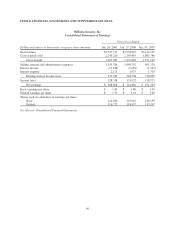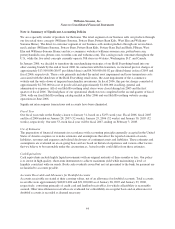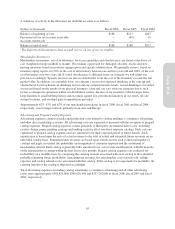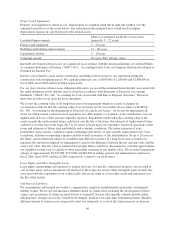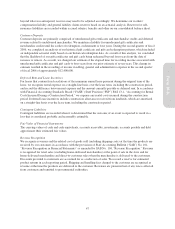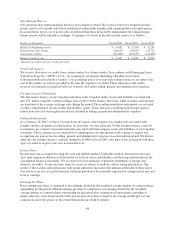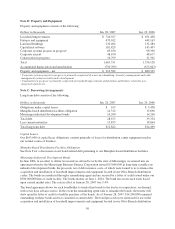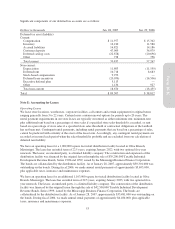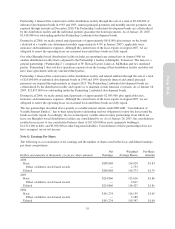Pottery Barn 2006 Annual Report Download - page 59
Download and view the complete annual report
Please find page 59 of the 2006 Pottery Barn annual report below. You can navigate through the pages in the report by either clicking on the pages listed below, or by using the keyword search tool below to find specific information within the annual report.
beyond what was anticipated, reserves may need to be adjusted accordingly. We determine our workers’
compensation liability and general liability claims reserves based on an actuarial analysis. Reserves for self-
insurance liabilities are recorded within accrued salaries, benefits and other on our consolidated balance sheet.
Customer Deposits
Customer deposits are primarily comprised of unredeemed gift certificates and merchandise credits and deferred
revenue related to undelivered merchandise. We maintain a liability for unredeemed gift certificates and
merchandise credits until the earlier of redemption, escheatment or four years. During the second quarter of fiscal
2006, we completed an analysis of our historical gift certificate and gift card redemption patterns, which included
an independent actuarial study based on our historical redemption data. As a result of this analysis, we concluded
that the likelihood of our gift certificates and gift cards being redeemed beyond four years from the date of
issuance is remote. As a result, we changed our estimate of the elapsed time for recording income associated with
unredeemed gift certificates and gift cards to four years from our prior estimate of seven years. This change in
estimate resulted in the recording of income in selling, general and administrative expense in the second quarter
of fiscal 2006 of approximately $12,400,000.
Deferred Rent and Lease Incentives
For leases that contain fixed escalations of the minimum annual lease payment during the original term of the
lease, we recognize rental expense on a straight-line basis over the lease term, including the construction period,
and record the difference between rent expense and the amount currently payable as deferred rent. In accordance
with Financial Accounting Standards Board (“FASB”) Staff Position (“FSP”) FAS 13-1, “Accounting for Rental
Costs Incurred During a Construction Period,” we expense any rental costs incurred during the construction
period. Deferred lease incentives include construction allowances received from landlords, which are amortized
on a straight-line basis over the lease term, including the construction period.
Contingent Liabilities
Contingent liabilities are recorded when it is determined that the outcome of an event is expected to result in a
loss that is considered probable and reasonably estimable.
Fair Value of Financial Instruments
The carrying values of cash and cash equivalents, accounts receivable, investments, accounts payable and debt
approximate their estimated fair values.
Revenue Recognition
We recognize revenues and the related cost of goods sold (including shipping costs) at the time the products are
received by our customers in accordance with the provisions of Staff Accounting Bulletin (“SAB”) No. 101,
“Revenue Recognition in Financial Statements” as amended by SAB No. 104, “Revenue Recognition.” Revenue
is recognized for retail sales (excluding home-delivered merchandise) at the point of sale in the store and for
home-delivered merchandise and direct-to-customer sales when the merchandise is delivered to the customers.
Discounts provided to customers are accounted for as a reduction of sales. We record a reserve for estimated
product returns in each reporting period. Shipping and handling fees charged to the customer are recognized as
revenue at the time the products are delivered to the customer. Revenues are presented net of any taxes collected
from customers and remitted to governmental authorities.
47
Form 10-K





